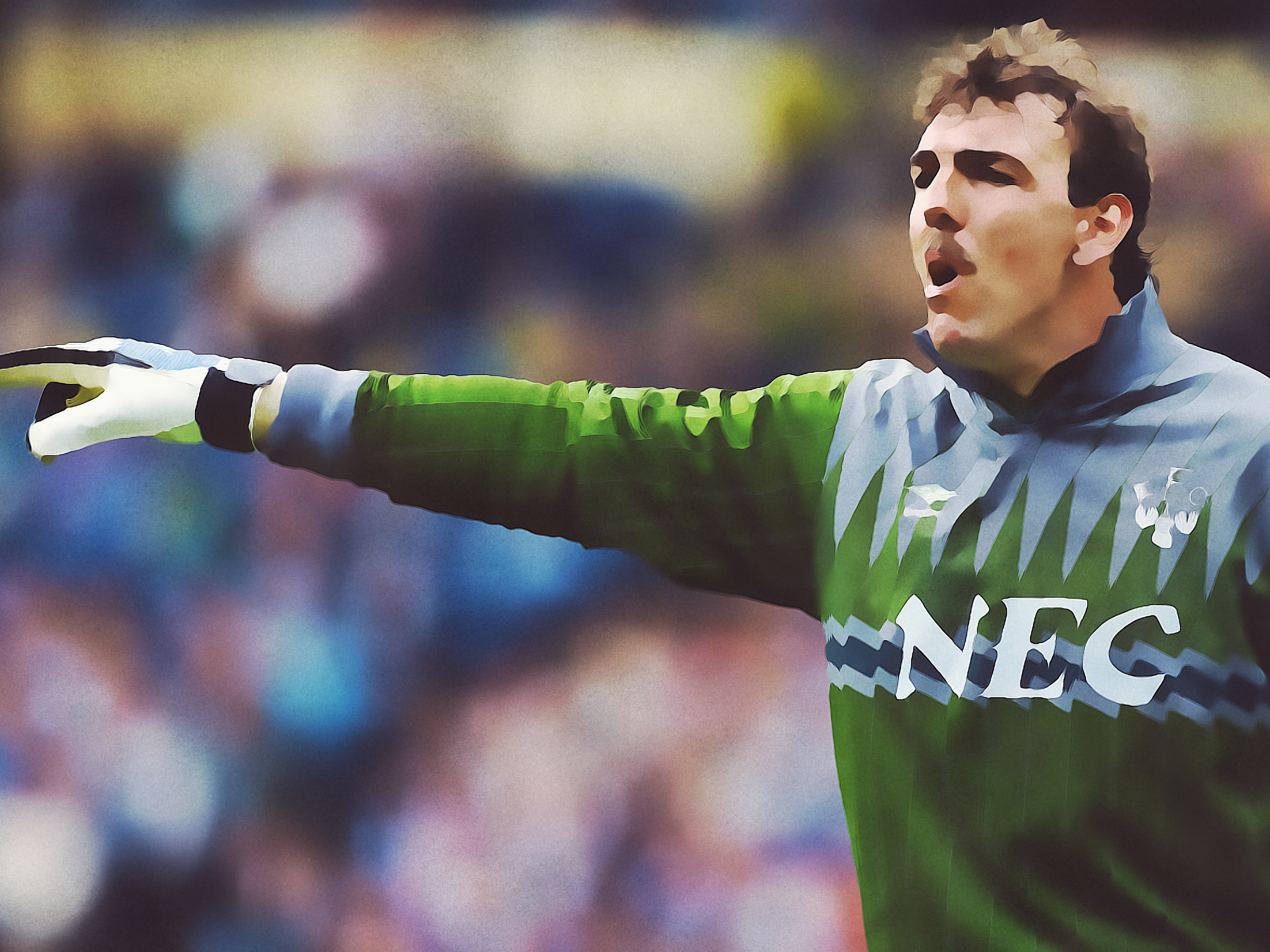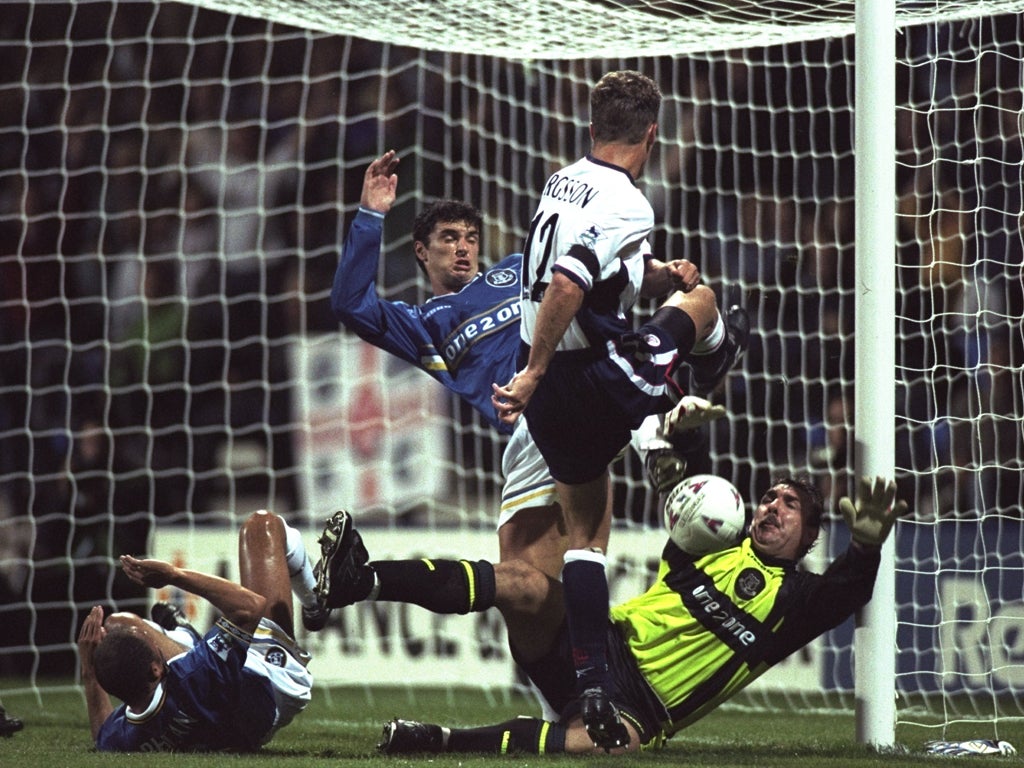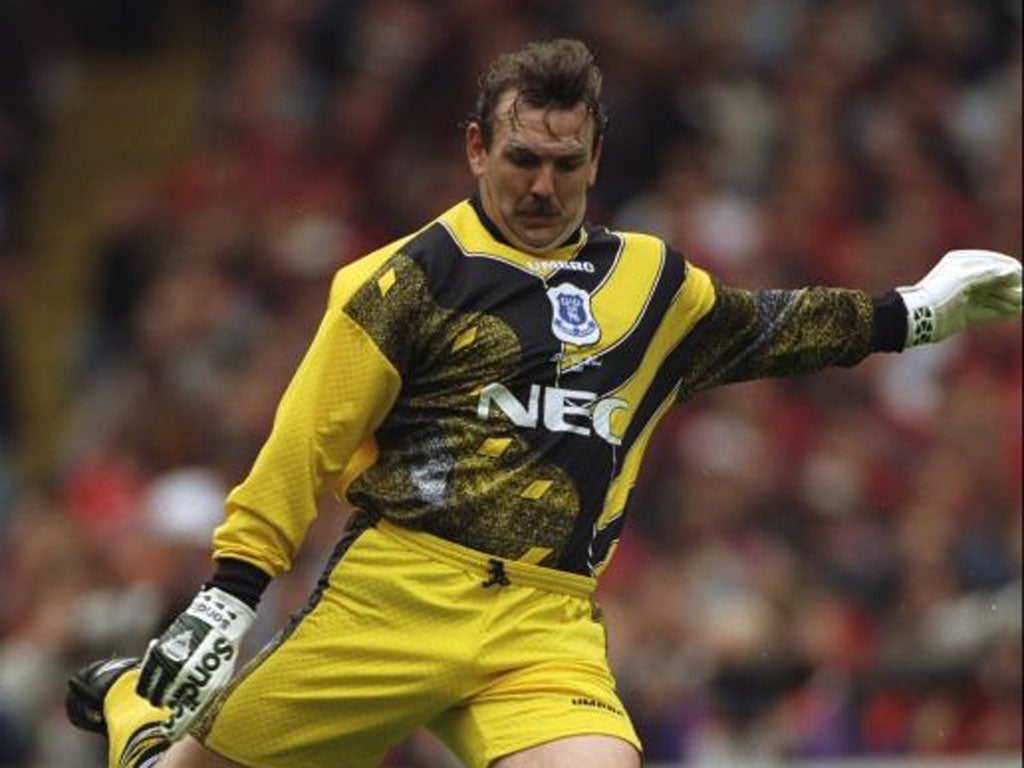The art of shot-stopping: Neville Southall on tennis-ball drills, cricket-bat saves and intimidation
In the second instalment of our new series on football’s finer crafts, one of Britain’s greatest goalkeepers explains what it took to reach the top of the game with the gloves

Your support helps us to tell the story
From reproductive rights to climate change to Big Tech, The Independent is on the ground when the story is developing. Whether it's investigating the financials of Elon Musk's pro-Trump PAC or producing our latest documentary, 'The A Word', which shines a light on the American women fighting for reproductive rights, we know how important it is to parse out the facts from the messaging.
At such a critical moment in US history, we need reporters on the ground. Your donation allows us to keep sending journalists to speak to both sides of the story.
The Independent is trusted by Americans across the entire political spectrum. And unlike many other quality news outlets, we choose not to lock Americans out of our reporting and analysis with paywalls. We believe quality journalism should be available to everyone, paid for by those who can afford it.
Your support makes all the difference.Goalkeeping is football’s most physical pursuit. With an expanse eight yards wide and eight feet high to protect, goalkeepers must be imposing, commanding and agile, willing to plough unflinchingly through clouds of shoulders and elbows and able to fling themselves from one side of their goal to the other at a millisecond’s notice.
More testing even than the position’s athletic requirements, though, are its unique psychological demands – focus is paramount; confidence is imperative.
“You’ve got to have a mindset of ‘Why can’t I save everything?’,” says Neville Southall, one of British football's greatest shot-stoppers. “Your body won’t move without your brain. Your mindset has got to be really sharp, really lively. You have to be at a certain level mentally to let your reflexes flow.
“It comes back to fight or flight. In a game situation, you have to be switched on. The physical bit’s dead easy, because you’re warm or you’re not warm. It’s about how you get that focus at the right time.”
A two-time league champion with Everton, capped 92 times for Wales and the last goalkeeper to be named FWA Footballer of the Year, Southall had it all: size, smarts and stunning reflex saves. But stripped back to its elements, Southall’s work was simple, focusing on augmenting his natural ability by adhering to fundamental principles.

“There were only three things I ever bothered with,” he says. “Eyes – if you can’t see the ball, you can’t save it; hands – practise catching; and feet – if you can see it and catch it but you can’t move, what’s the point? As a kid, I would keep a diary of all the things I did well and all the things I didn’t do so well. Every six weeks, I’d examine everything I did.”
Southall’s first exposure to organised football with hapless local side Llandudno Swifts offered ample opportunity to hone his craft – “We got beat a lot; 16-0 was a moral victory.” At school, he would play in teams two or three years above his age group, and he was playing men’s football for a pub team in a Sunday league aged 12. But Southall received little in the way of formal, position-specific coaching until he reached the top of the professional game.
“It was all natural,” he says. “I never thought I was anything special. I had decent natural technique, decent natural balance. It was never going to give me really bad habits. What I did until I was 20, I did on my own. The first proper goalkeeping coach I had was at Everton.”
There was nothing especially sophisticated about the bespoke goalkeeping training Southall eventually benefitted from at Everton, but simple exercises served to reduce reaction times and enhance hand-eye co-ordination.
“The ball got pulled back from the byline and you’d have to run from one end of the goal to the other,” Southall says, detailing the typical drills he’d work through. “Or you’d have your back to play and they’d shout ‘Turn’. We had the wall at Belfield, and they’d hit the ball at the wall and it’d go anywhere. And we’d use a tennis ball sometimes; the smaller ball would sharpen your reflexes.”
Although his 20-year career passed long before 'sweeper-keeper' entered the footballing lexicon, Southall is a staunch advocate of a proactive approach to goalkeeping. He might not have rushed regularly from his penalty area a la Manuel Neuer, but he applied a cerebral approach to preventing the need to call upon his world-class reflexes.
“A lot of keepers now are reactive – they just react to situations,” he says. “I want a keeper who can think his way through games. You’ve got to be in the right position to give yourself the base to make saves.
“A thinker will be able to stop a situation 40 yards away from goal; somebody who reacts tends to stops it six yards out. I know which I’d prefer. I would want to cut it out further away, by putting defenders in certain positions or reading the play.”

This preventative philosophy extends to the moments immediately after a save is made, too, in which a considered, well-drilled and accurate parry can guard against further stops being necessary.
“If there are forwards running in, you look for the gaps,” Southall explains. “It’s all about the angle of your hand and where you want it to go. You can angle it out for a corner, or angle it through a gap – you don’t have to push it straight back out. You can think of it like a cricket bat, the way you angle your wrist to push the ball away. In training, we used to practise angling it between poles, or flicking the ball over peoples’ heads as they run in.”
As much a key to his success as his rapid reactions and flawless positioning was Southall’s ability to instigate a battle of wits with opponents, to inspire indecision and, wherever possible, seek even the most marginal of advantages.
“I based my game on putting myself in a position to intimidate, to influence things. It’s like chess: if you can make the other person do what you want them to do, you don’t have to do anything – that’s what the art of goalkeeping is.
“I wore a black shirt because I thought it would be harder, in a night game, for a forward to pick me out. That might buy you a second for a defender to get back. And I never put anything in the corner of my goal. I never put a bottle in the net, I would never put gloves in the net. Why would I want to give the forward something to aim at? Give them nothing, then you’ve got a chance. It’s about taking everything away from a forward that you can, and putting more pressure on him.”
As with any other role on a football pitch, astute coaching, hours of practise and a proclivity for learning can see goalkeeper’s make striding improvements; techniques can be refined and athleticism can be enhanced.
But it is the sharpening of one’s mental tools, Southall believes, that truly separates the great goalkeepers from the merely good.
“Some people have naturally got the reflexes, but everything can be improved on. The difference between the bottom rung of footballers and the top is their brains; they see things quicker. Everybody can be super-fit, but not everyone can be super-intelligent in football.”

Join our commenting forum
Join thought-provoking conversations, follow other Independent readers and see their replies
Comments